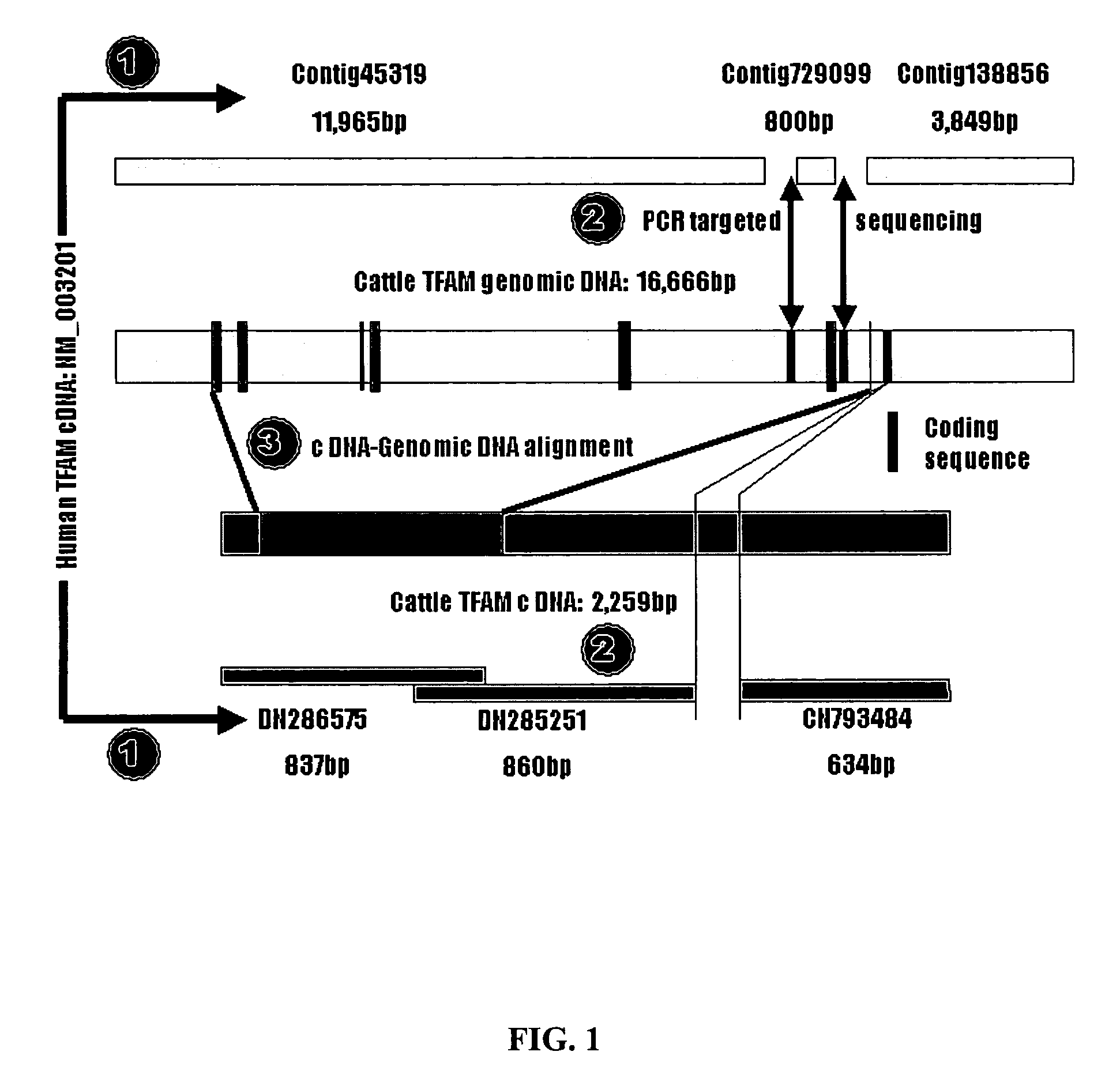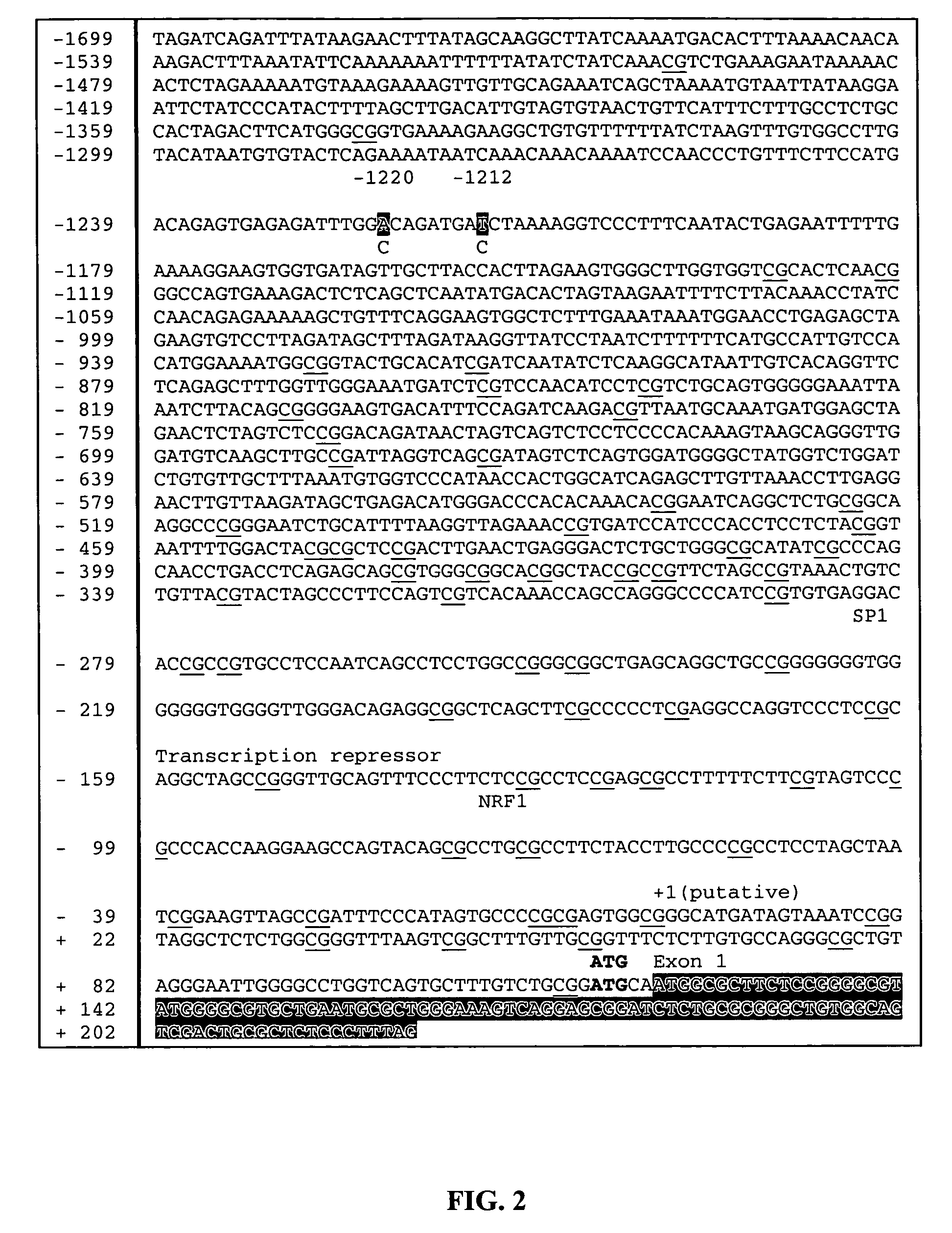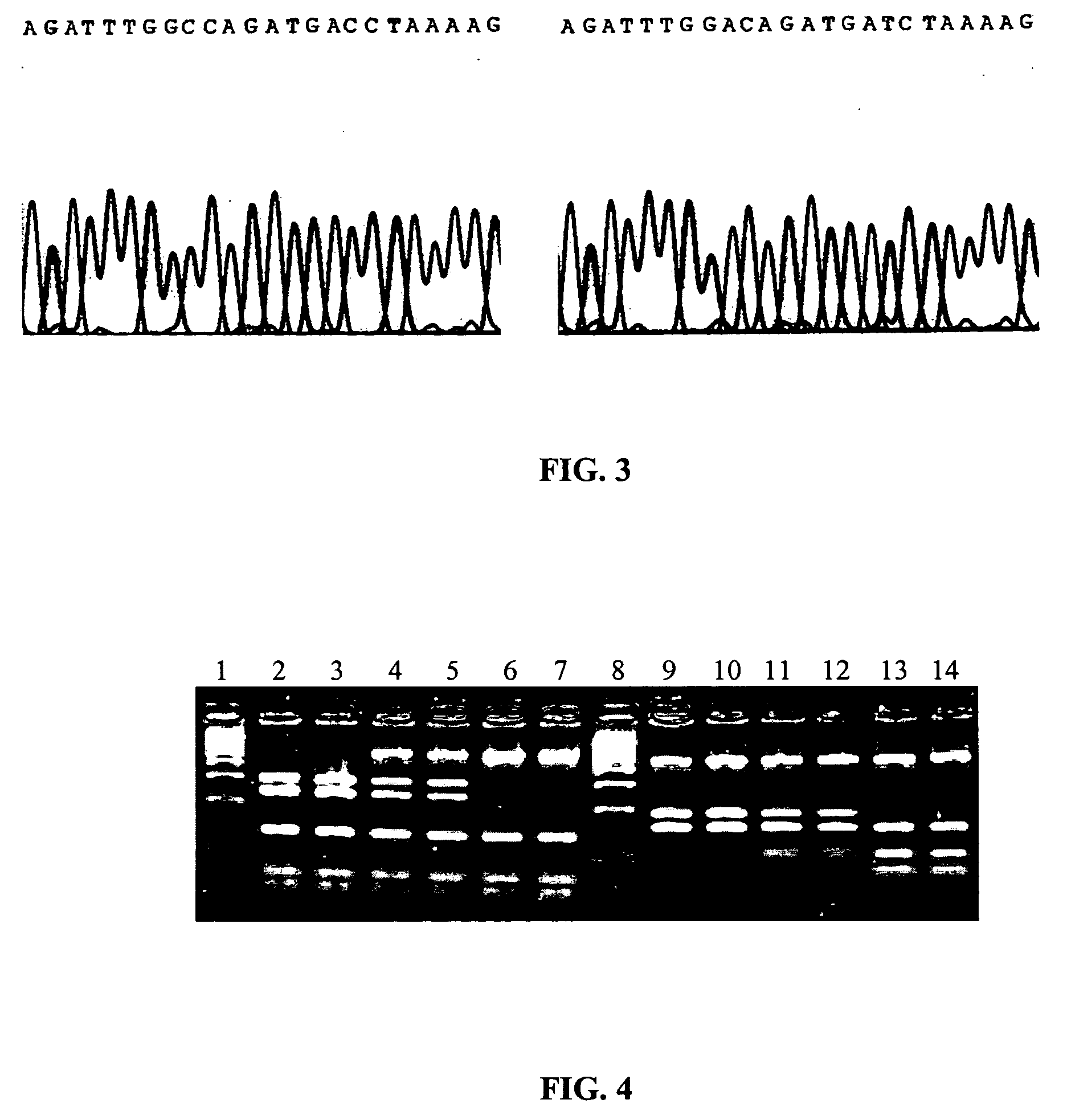Polymorphisms in mitochondrial transcription factor A ("TFAM") gene and their associations with measures of marbling and subcutaneous fat depth in beef cattle
a technology of mitochondrial transcription factor and marbling depth, which is applied in the field of polymorphisms in mitochondrial transcription factor a (" tfam") gene and their associations with measures of marbling and subcutaneous fat depth in beef cattle, can solve the problems of significant political and regulatory resistance of animals and their relatives to the introduction and use of such methodologies, and methodologies are also non-inheritabl
- Summary
- Abstract
- Description
- Claims
- Application Information
AI Technical Summary
Benefits of technology
Problems solved by technology
Method used
Image
Examples
example 1
[0164] This Example provides DNA sequences, genetic polymorphisms and significant associations with marbling and subcutaneous fat depth in Wagyu×Limousin F2 crosses for the bovine mitochondrial transcription factor A (TFAM) gene.
[0165] Mitochondrial transcription factor A (TFAM), a nucleus-encoded protein plays an important role in initiation of transcription and replication of mitochondrial DNA (mtDNA). Decreased expression in nuclear-encoded mitochondrial genes has been associated with onset of obesity in mice. Therefore, it was hypothesized that genetic variants in TFAM gene influence mitochondrial biogenesis consequently affecting body fat deposition and energy metabolism. In the present study, both cDNA (2259 bp) and genomic DNA (16,666 bp) sequences were generated for the bovine TFAM gene using a combination of in silico cloning with targeted region PCR amplification. Alignment of both cDNA and genomic sequences led to the determination of genomic organization and characteriz...
example 2
[0211] This Example describes basal nucleus-encoded mitochondrial transcription genes and meat quality in beef cattle.
[0212] Evidence has shown that the basal mitochondrial transcription machinery directs the mitochondrial biogenesis and gene expression, and thus it may play an important role in body fat deposition and energy metabolism. Here we report sequence compilation, genetic marker development and association analysis of TFAM, TFB1M and TFB2M genes with marbling and subcutaneous fat depth (SFD) in cattle using a reference population of Wagyu×Limousin F2 crosses. Statistical analysis revealed that the bovine TFAM gene was significantly associated with marbling (F=3.84, P=0.0229) and SFD (F=3.56, P=0.0301). The genetic markers developed in the study can be used to further determine how this mitochondrial complex is important to improve meat quality in the beef industry.
[0213] Due to its limited protein coding capacity, the initiation and regulation of gene expression in mitoc...
example 3
[0225] This Example provides associations between TFAM-1, TFAM-2, and FABP4 markers and carcass traits in commercial feedlot steers and heifers.
[0226] The following markers were evaluated: (1) a C to A substitution at the 1220 nucleotide position in the mitochondrial transcription factor A gene (TFAM-1) promoter, (2) a C to T substitution at the 1212 nucleotide position in the TFAM-2 promoter and (3) a G to C substitution at the 7516 nucleotide position of the fatty acid binding protein 4 gene (FABP4). Previous results indicate that the markers affect Markers affect marbling and backfat.
[0227] Initially, there were 1,589 records initially from steers and heifers. The target endpoint was 12.2 mm backfat. Harvest date was predicted optimal economic endpoint by animal. Contemporary groups included source and sex. It was assumed that the breed type confounded with the source. The final data set included the number of records based on available phenotypes and genotypes for each trait. ...
PUM
| Property | Measurement | Unit |
|---|---|---|
| Mass | aaaaa | aaaaa |
| Mass | aaaaa | aaaaa |
| Mass | aaaaa | aaaaa |
Abstract
Description
Claims
Application Information
 Login to View More
Login to View More - R&D
- Intellectual Property
- Life Sciences
- Materials
- Tech Scout
- Unparalleled Data Quality
- Higher Quality Content
- 60% Fewer Hallucinations
Browse by: Latest US Patents, China's latest patents, Technical Efficacy Thesaurus, Application Domain, Technology Topic, Popular Technical Reports.
© 2025 PatSnap. All rights reserved.Legal|Privacy policy|Modern Slavery Act Transparency Statement|Sitemap|About US| Contact US: help@patsnap.com



